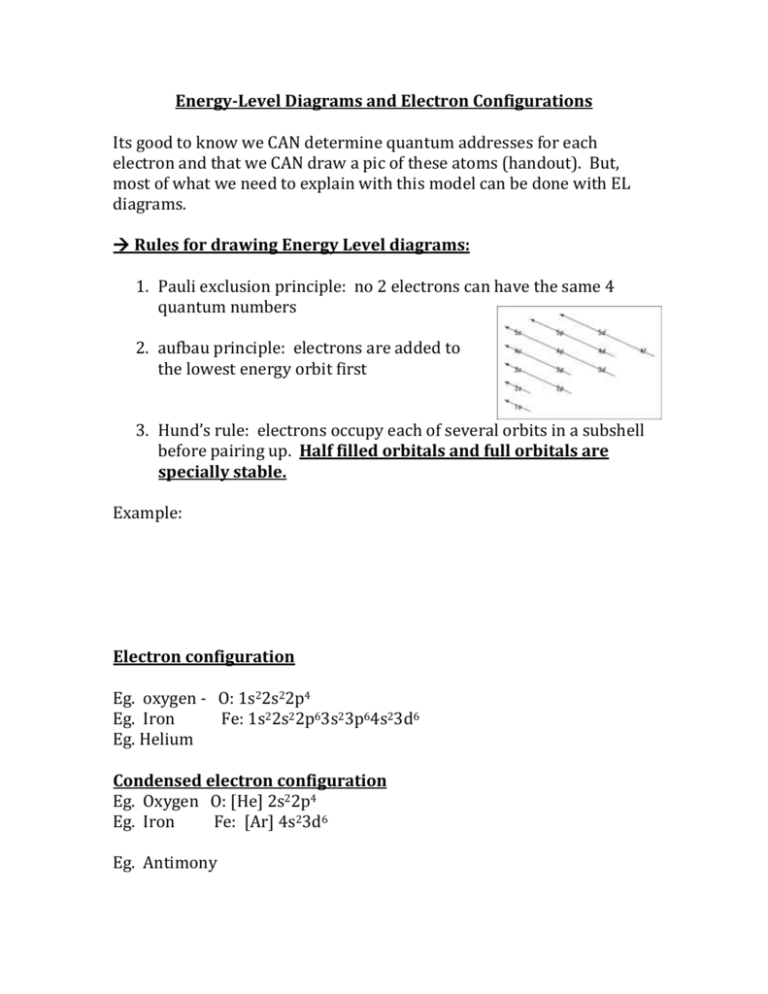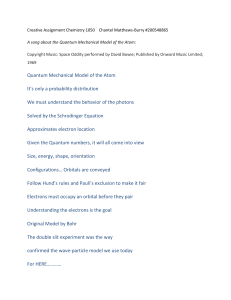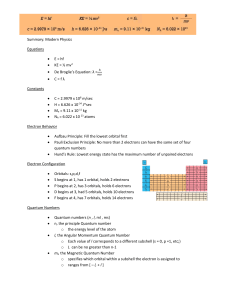Energy-Level Diagrams and Electron Configurations
advertisement

Energy-Level Diagrams and Electron Configurations Its good to know we CAN determine quantum addresses for each electron and that we CAN draw a pic of these atoms (handout). But, most of what we need to explain with this model can be done with EL diagrams. Rules for drawing Energy Level diagrams: 1. Pauli exclusion principle: no 2 electrons can have the same 4 quantum numbers 2. aufbau principle: electrons are added to the lowest energy orbit first 3. Hund’s rule: electrons occupy each of several orbits in a subshell before pairing up. Half filled orbitals and full orbitals are specially stable. Example: Electron configuration Eg. oxygen - O: 1s22s22p4 Eg. Iron Fe: 1s22s22p63s23p64s23d6 Eg. Helium Condensed electron configuration Eg. Oxygen O: [He] 2s22p4 Eg. Iron Fe: [Ar] 4s23d6 Eg. Antimony What can we explain with this Model? 1. Trends in Ionization Energy and Atomic Radius Read the two page handout and answer these guiding questions…. Does our quantum model explain the trend in AR? How? Can the model explain why there are some ‘anomalies’ in the transition metals radii? What is the general trend going across a period or going down a group in IE? Why? Can the quantum model explain why phosphorus is unusually high IE? Or why Sulfur is unusually low? 2. Anomalous Configurations Predict the electron configuration for Copper and for Silver Write them here: Now look at the ACTUAL configurations… Remember – half filled and full filled orbitals are specially stable… 3. Ions of the Transition Metals For negative ions (like S2-), draw the energy level diagram and then add the required (example 2) electrons to the levels in order Try to predict the common charge on the halogens For positive – draw the neutral atom’s energy level diagram, then take away from the highest quantum number first (so 4s before 3d); also, ½ filled orbits are special Try to predict WHY iron can be +2 or + 3 4. Paramagnetism ½ filled orbits are associated with being paramagnetic Why is iron paramagnetic?











